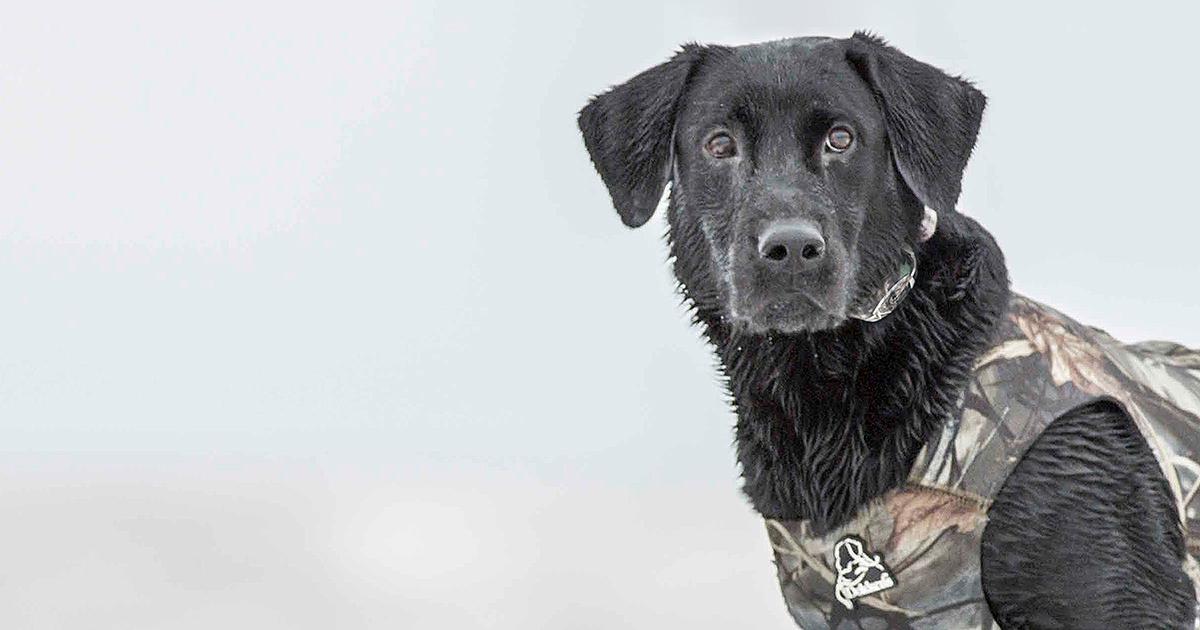
Retriever Care in Cold Weather
Posted by The SportDOG StaffCold-weather waterfowling can mean a lot of extra work in sometimes nasty conditions, but those of us who take on those challenges are often rewarded with some of the season’s best hunting. It’s extremely satisfying to bag the limit when the wind is howling and ice is forming on the decoys, even if it means frozen fingers and toes.
When it comes to caring for your retriever on these types of hunts, however, it’s best to keep your ego in check. What I mean by that is that your diehard duck dog is going to keep working as long as you let it, but it’s up to you to know when to take a break or stop altogether. It’s up to you to keep your dog safe and healthy, so let’s look at some of the late-season factors you should know how to address.
1. Indoor vs Outdoor Dogs – It seems the percentage of retrievers that enjoy the comfort of living indoors is higher than it used to be. Nowadays, dogs are more commonly part of the family. They're lounging on the sofa, perhaps sleeping in your children's beds and travelling inside the lorry. In the past, it was more usual for a dog to live in the garden or an outdoor kennel. Your indoor dog isn't as accustomed to the weather as an outdoor dog. I don't care what anyone says, because I'm telling you from experience that an indoor dog feels the cold more quickly.
If you're having a splendid day of shooting and your dog is frequently going in and out of the cold water, you must recognise when to say enough is enough and give your dog a rest. Whether you're on a boat or in a hide, place some sort of insulated mat beneath the dog, position it behind or inside a windbreak and, finally, use one of those simple propane-fuelled mini-heaters to help your dog maintain its body heat.
2. Be Smart About Feeding – Swimming in water barely above freezing and then shivering in freezing temperatures requires a tonne of calories. Even when a dog isn’t making many retrieves, the extra activity of early-morning starts, the excitement of the hunt and constantly being on alert all burn energy.
You can offset some of that energy burn by feeding a quality, high-fat and high-protein food. Resist the temptation to feed vastly more than usual because your dog’s system isn’t going to handle it well. Here’s my regimen …
Firstly, I always feed after the hunt. I don’t like anything in a dog’s stomach before a big day of work. So, we head out in the morning and hunt for a few hours, then come in for a break. At that time I feed a small amount (about a mug or a mug and a half for a dog that normally has four mugs a day). We go back out for the afternoon hunt, and when we return, I then give that dog its usual portion.
If we're having an extremely good day of hunting and a dog is getting lots of work, I'll bring along some extra food or dog treats for the hide and dole those out in small increments. The most important point here is that you should never work your dog on a full stomach, regardless of the weather. Yes, your dog might lose some weight during a busy season, but the solution is not to overcompensate by overfeeding.
3. Advantages of Waistcoats – I reckon a neoprene dog waistcoat is beneficial in many ways. It offers a bit of insulation, helps with buoyancy and provides protection against ice and underwater snags and stumps. Ensure your dog becomes accustomed to wearing a waistcoat before the season. And make sure it fits properly. A waistcoat should be close-fitting but not constrictive, and a proper fit reduces the risk of your dog getting caught on underbrush or other obstacles.
If you’re a diehard waterfowler who can’t get enough action, the late season is made for you. With some preparation, your dog will enjoy it just as much as you do.
